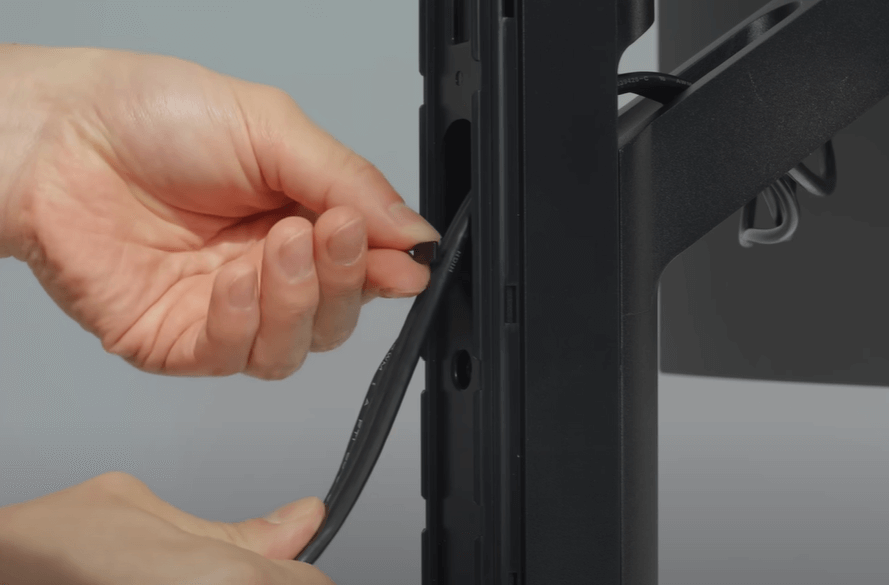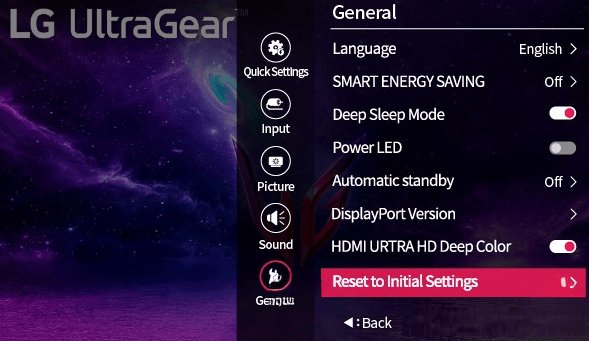Dealing with an LG Monitor that isn’t detected can be a frustrating experience, especially when the cause isn’t immediately clear. This issue might arise for various reasons, and fortunately, several troubleshooting steps can help resolve this problem. In this guide, you can explore different methods to diagnose and fix the not detected or no signal issue with your LG monitor.
Reasons Behind LG Monitor Not Detected or No Signal
Here are some common causes for LG Monitor being detected;
- Loose or damaged cable connection.
- Outdated Graphics Drivers.
- Incorrect input source and compatibility issues.
- Confirm that your device supports monitor specs.
Inspect Cable and Input Ports for Damage or Debris
Begin by carefully checking the cable connecting your LG monitor. Look for any visible issues like frayed areas, loose connectors, or bent pins, as these can disrupt the signal and prevent detection. Make sure the ports on the monitor are clear of any dust, dirt, or unfamiliar objects that may be blocking the connection.

Even a small particle can interfere with the signal. If there’s any doubt about the cable’s condition, consider trying a different, high-quality cable to eliminate any possibility of damage causing the issue.
Restart the Monitor
Sometimes, the monitor itself needs a quick reset to function properly. Turn the monitor off and leave it powered down for about 10–15 seconds. This pause can help clear any internal glitches within the monitor’s system. Now, turn on your LG Monitor and wait for a few minutes.
This method is especially helpful if the monitor was previously working fine but suddenly stopped displaying.
Test the Monitor on Another Device
Connecting your LG monitor to a different device, like a laptop, can help identify if the issue originates from the monitor itself or your connected device. If the monitor works fine with a different device, the issue may be tied to the external device hardware, software settings, or graphics card.
However, if the monitor isn’t detected on another device either, it’s possible the monitor has a hardware fault that requires repair or replacement.
Try a Different Connection Type
Monitors often support multiple connection types, including HDMI, DisplayPort, VGA, and USB-C. If you are experiencing issues with one type, try using another available port. For example, switch from HDMI to DisplayPort, as some ports may experience temporary glitches or be incompatible due to firmware issues.

Switching to a different type of connection can help bypass issues related to the original port and give your monitor another opportunity to connect with the device.
Disconnect and Reconnect the External Device
If your LG Monitor is connected to an external device, temporarily disconnecting and reconnecting can often help re-establish a proper connection. Start by turning off both the monitor and the external device, then unplug the cable connecting them. Wait at least 10 seconds, as this short pause can clear any temporary errors.
After reconnecting, ensure the cable is firmly seated in both the device’s ports. Turn on both devices and check if the monitor is now detected. This simple step can reset the connection between devices, potentially resolving the problem.
Update the Operating System
Outdated operating systems or graphics drivers can interfere with proper monitor detection. Begin by checking if there are any available updates for your operating system, as these updates often contain bug fixes and compatibility enhancements. Afterward, focus on updating your graphics card drivers, as these are essential for monitor compatibility. Visit lg.com and download the latest driver version. Regularly updating your system and drivers can help ensure smooth performance with connected monitors.

Reset Monitor
If the issue persists, performing a factory reset on your LG Monitor can restore default settings, which might resolve configuration-related issues. This step will erase custom settings or adjustments that may have inadvertently caused the detection problem.

Once the reset is complete, reconnect your monitor to check if it’s now recognized by your device.
Bottom Line
By following these detailed steps, you will be addressing each potential cause of your LG monitor’s detection issue and increasing the likelihood of restoring a stable connection. If you are still facing challenges, contact LG Customer Service for further assistance. In addition, if you want additional tips, consider visiting my community forum, where you can find advice and discuss more related to this topic.
FAQ
Yes. Windows power management settings can sometimes put external displays into sleep mode, making them undetectable by your monitor. Go to Device Manager, locate your graphics adapter, and open the Properties menu. Under the Power Management tab, uncheck the box that allows Windows to turn off the device to save power.
Yes. If your LG Monitor runs on Windows, it has a built-in troubleshooter designed to identify and fix common hardware issues, which can be helpful for monitor detection problems. To access it, go to Settings → Update & Security → Troubleshoot → Additional Troubleshooters → Select Hardware and Devices → Run the Troubleshooter. This will automatically scan your system for any device errors and attempt to correct them.